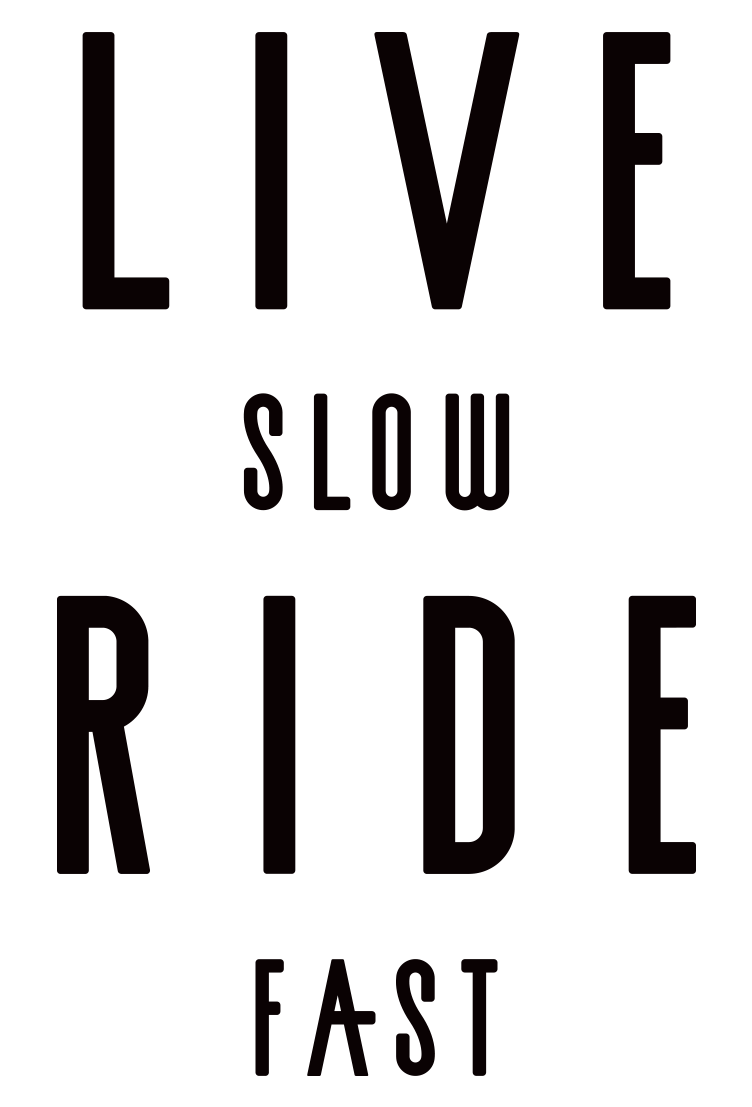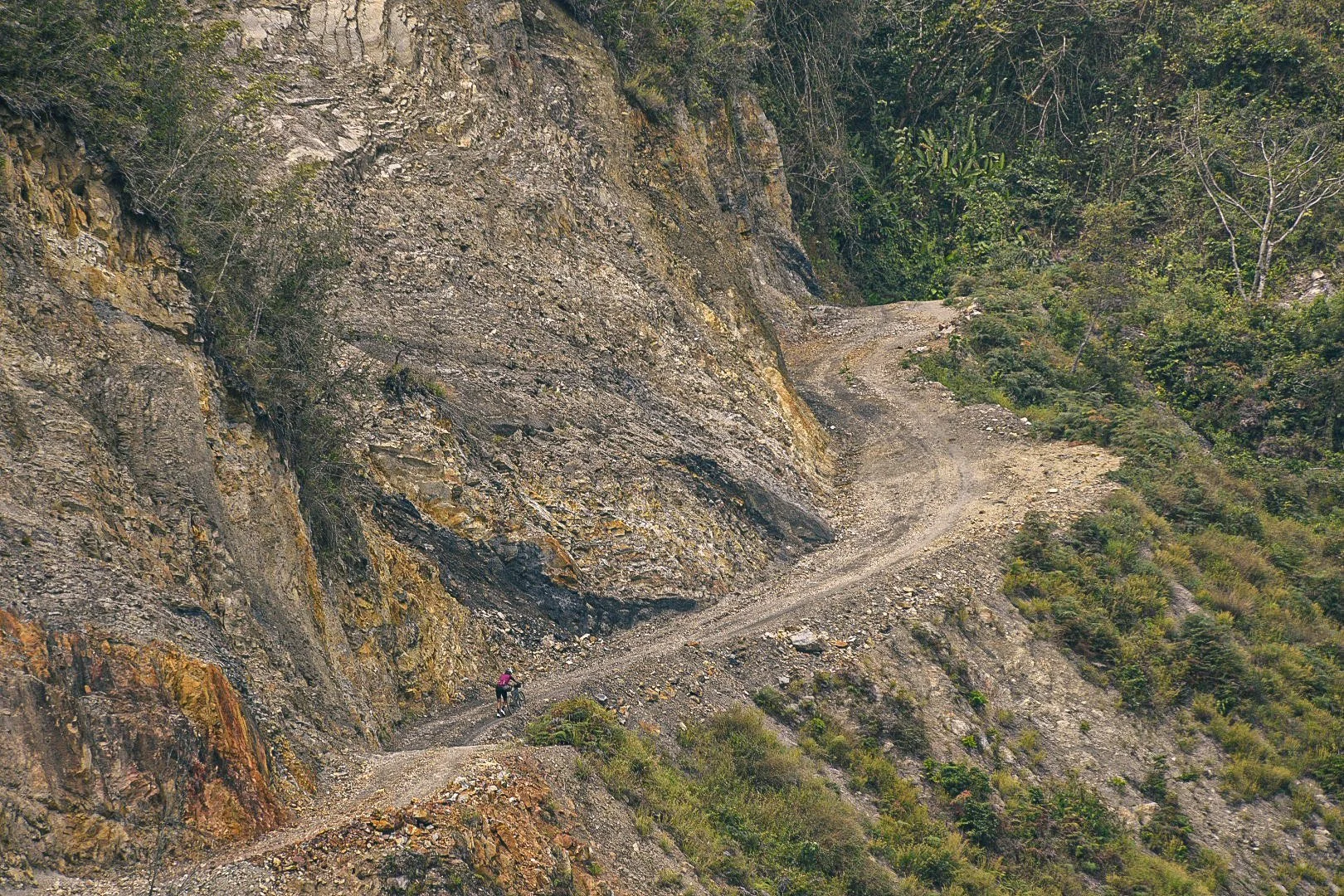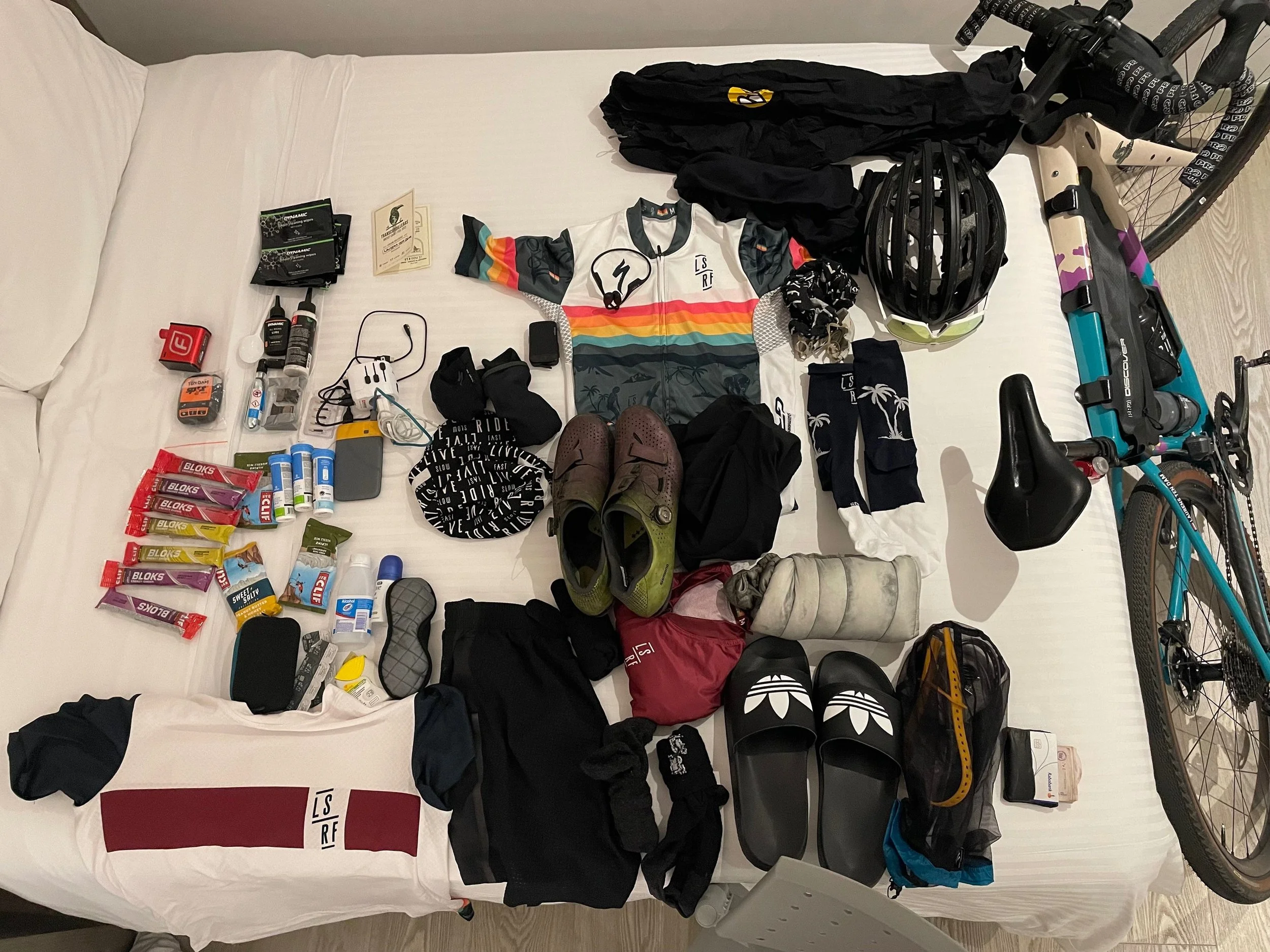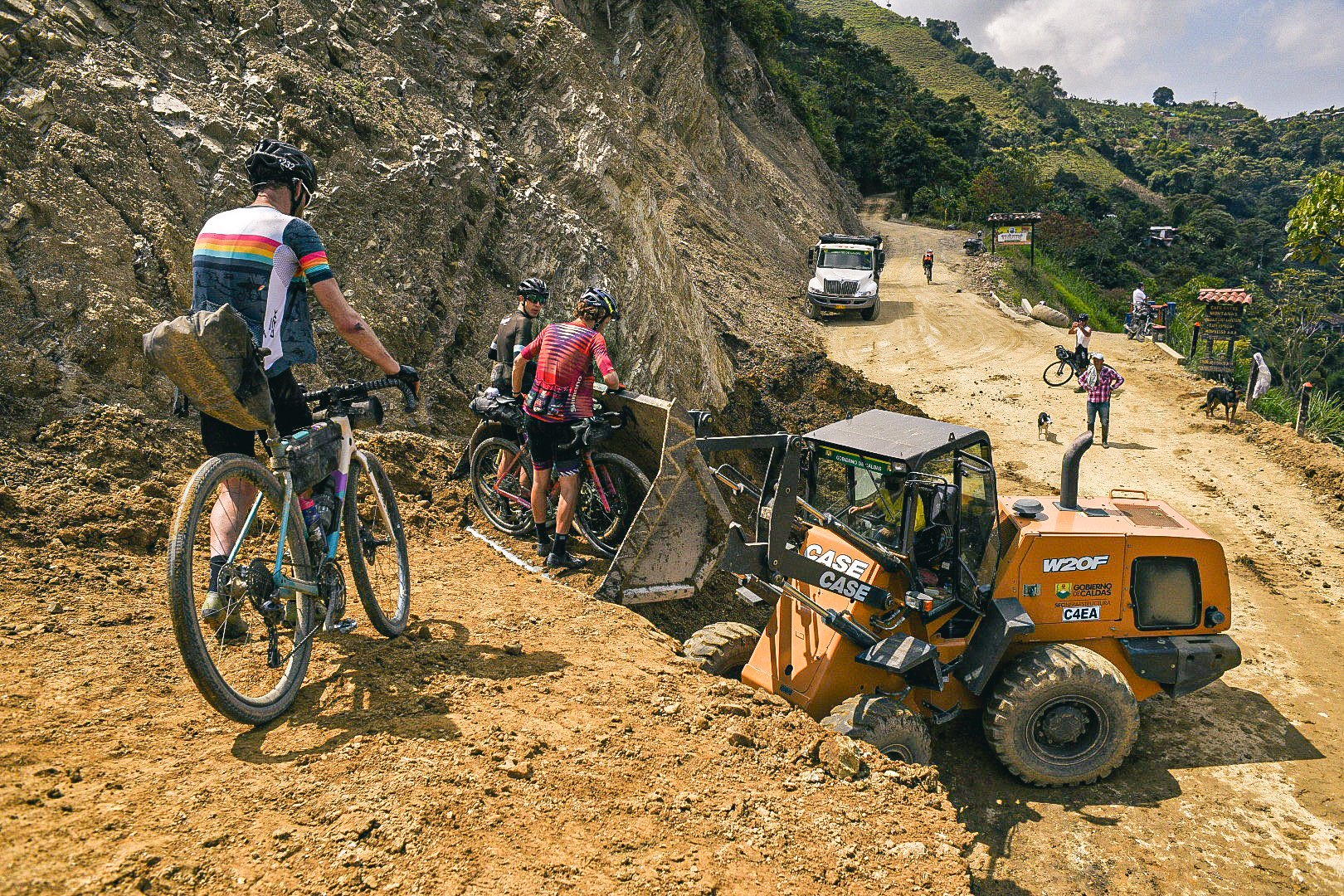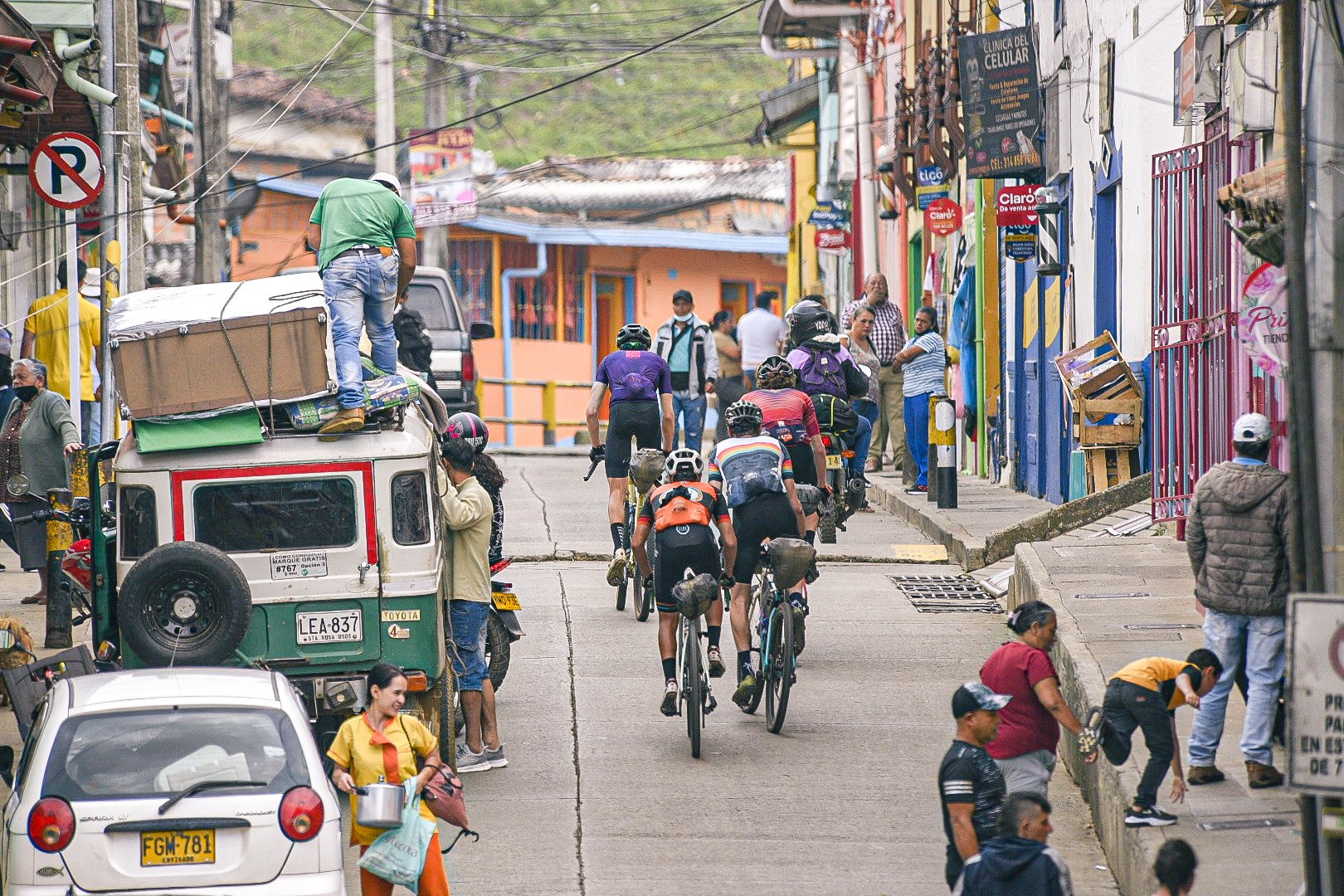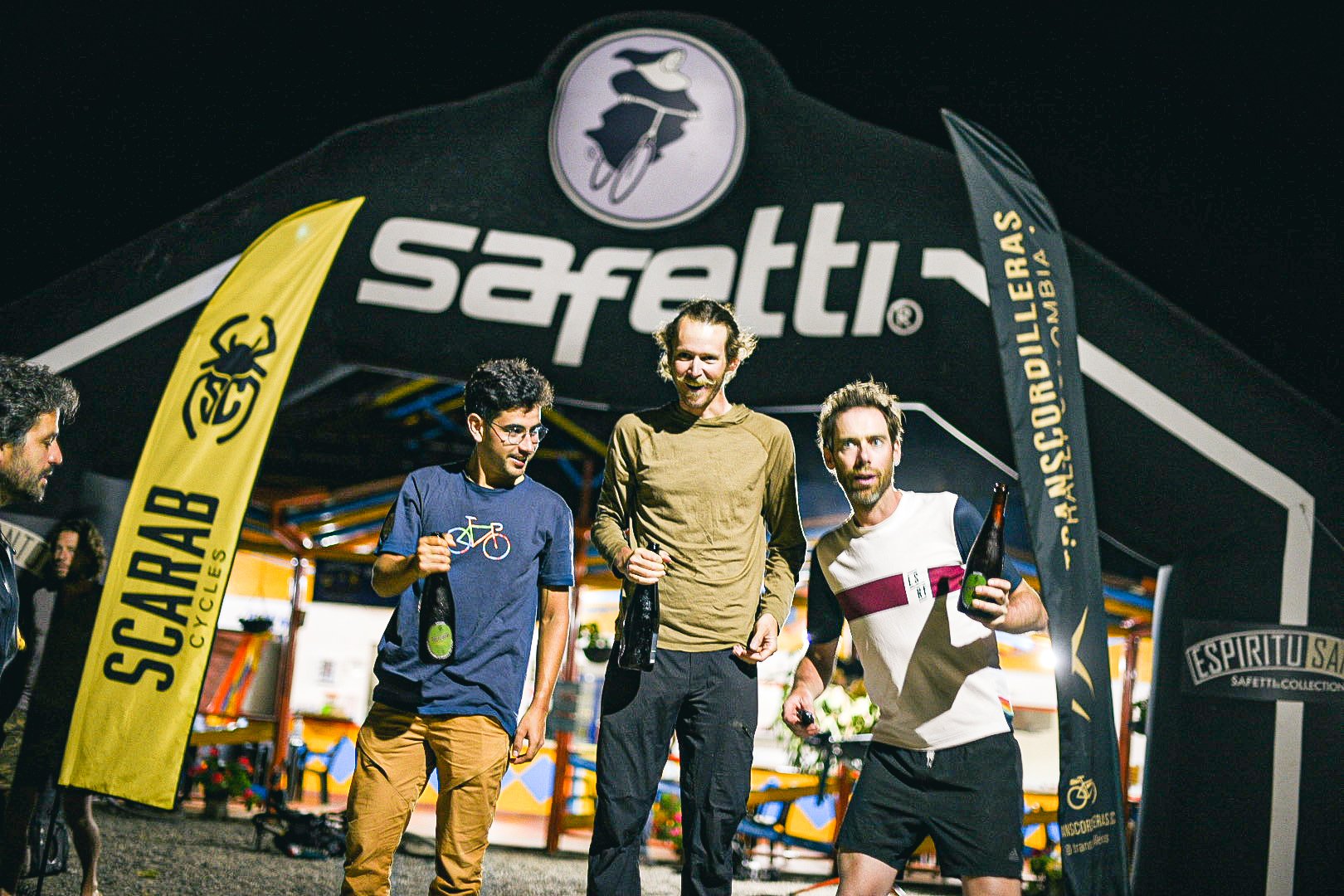Transcordilleras Colombia
Stage 1 was almost done. I was second behind Peter Stetina, my fellow gravel pro from the States and I just didn’t want to. I didn’t want to get off my bike again and having to push it up the Colombian hill, fully loaded. So I persisted. With my last powers, I tried to make it work on the 31 x 34. Oh, if only I would have brought a 40 sprocket. It would have taken an hour or so to get it on the bike, probably not entirely as advised by Shimano, but at least I would have had it on my bike now. But no, last week I was convinced I would easily conquer those steep Colombian mountains in thin air, using the 31 x 34. Boy, was I wrong. And so I continued pushing the pedals on the 25 % goat track, until my rear wheel slipped and I couldn’t get out of my pedal fast enough. Just like an amateur at the first traffic light, I fell on the ground, in slow motion. Cramp in my left foot immediately followed and as I sat on the ground, stretching it out, I overthought my choices in life. How did I end up here, on Colombian rocks, sitting on my ass at 3000 m altitude?
We would have to go back to last year May, during my American adventure. I had just won Gravel Locos and their Colombian camera-man came up to me and said: ‘’Laurens, I know you are about to do a 4-day race in Kenya at high altitude this year (see Kokoto), but did you know that we have a similar challenge in Colombia? This bike pack race takes you over three mountain ranges of the Andes, from east to west, 1100 kilometers long and 25.000 meters of altitude. You get 8 days. Our last winner was Mauricio Ardilla.
When he said ‘three mountain ranges’’, I was intrigued. Moral was high that weekend and, let’s be honest, how bad could it be? When I heard the name ‘Mauricio Ardilla’, he had me. I keep a fond memory of our time as riders for team Rabobank between 2008 and 2010, helping Menchov to his Giro d’Italia victory. I could definitely see us conquering the Cordilleras of Colombia. The deal was made and I would come race in 2022.
Thomas Dekker, also a former teammate of Ardilla in 2008 and Hossel Dennis, my business compagnon, loved a little adventure too. After our trip to Kenya and the experience of racing on high altitude gravel, we were not afraid. Registration was done, we booked our flights, arranged our bikes and off we were.
Preparation is everything. So two weeks before the race would start, I flew to Colombia to get used to the altitude. Jumbo-Visma’s Tom Dumoulin and Koen Bouwman had invited me to stay with them and train together. This old guy was flattered and so I immediately accepted the invitation. An old school training camp: train, eat, sleep and having fun along the way.
During that trip, I met the organizer and first winner of the Transcordilleras race, Mauricio Ortez. His nickname, ‘the Angel’, was no joke. He arranged everything for me and the boys. A new house to stay, when the first one was impossible to get to by car, the best places to eat and all the covid-tests we needed. And as he told me the ins and outs of the race, something became very clear to me…
When you pronounce it very quickly, 25.000 meters of altitude seems okay, but on a gravel bike, given 8 days, it is an immense challenge. The parcours crosses several peaks of 4000 meter. The Angel explained to me, that self-supported in Transcordilleras, actually means self-supported. So no clean outfits and no refreshments at the finish. No ‘Clif Bloks’ given to you during the race. No water bottles. But also no mechanics making sure your bike is race ready again the next morning. You had to do it all by yourself. From the start till the finish on day 8, you had to take care of everything yourself. You were allowed to leave a 5 kilo bag in the van, which you would see again 8 days later. Time was stopped after the finish of every stage, and then the fun could start. Clean and prep the bike, wash your clothes and make sure they dry, get diner somewhere, buy snacks for the race, sleep and get breakfast somewhere. For me, Mauricio’s nickname was turning slowly from Angel to Devil, until he assured me that we weren’t going to die in the Colombian jungle. Our GPS trackers would make sure we didn’t….a big relief.
Packing-stress, are you familiar to it? The last days before this adventure it consumed me. And this time, it was the normal stress times ten. Everything I packed had to pass the two golden rules of the Angel. Rule number one: is it light enough? Again, every gram counts when you have to climb that much. And rule number two: make sure to keep your bike in tact. So all personal comfort was thrown out of the bag again. Even our diva Thomas wore the same shirt in between rides for 8 days, but he did bring that extra inner tube. See the packing list for the complete set-up including weights.
So here I was, on my ass, day 1, looking for the courage to get up again and push my Diverge with all the bags up against the hilly road. I must not complain, I repeated to myself. If I was to complain about it, being second in the stage and all, how would the rest feel? Thomas? Hossel? Last time I saw my mates was five hours ago, when Peter, me and a bunch of fast Colombians accelerated on the first climb of the stage.
Of course I continued. I had no choice and eventually, it was me who had registered for this race, nobody had forced me. So I arrived after 8 hours of hard labor in Mongui, a small mountain village. Dead tired, but the first daily routine was waiting to be done. Food had be poured in this empty body as soon as possible, the bike needed attention and the clothes were dirty. This routine after every stage became sort of a mantra. But luckily for me, the Colombian people were really nice to us. They hurried to make me a hot plate of rice, veggies and chicken within 10 minutes after the finish. I was allowed to wash my bike at the same spot where the plates were washed and the lady of the hotel insisted on washing my clothes. She lit the fire place and our jerseys were dry again in no time.
Speaking of hotels, you have to book them yourself, as well. After registration and paying the fee of 350 euros, your are given an old fashioned tour book, including a list of hotel suggestions. Prices vary between 10 and 40 euros per night, but only in the bigger cities you can book the more expensive hotels. A full tummy will cost you about 3 to 4 euros. All together, you don’t have to afford much to suffer for a whole week…
I say ‘suffer’, and don’t get me wrong, crossing the Andes is something different than the Eiffel, but luckily it didn’t get as bad as it got the first stage. I got out of bed the second morning, broken and a bit afraid of what this stage would bring. During breakfast I heard stories of people getting ‘rescued’ at 1 o’clock in the morning. What would this week be like? But in this second stage, the famous BOYACA gravel was served. The finest gravel of Colombia reduced the amount of back pain immediately. We finished lower than we had started and we ended with a respectable 26,5 km/h average. Much better than the 15 km/h of day 1. And that was just me, ending in second place…
Don't think in terms of problems, think in terms of solutions.
No, there was a nice flow in this race week. There were really heavy stages, like for instance day 4, when the heat was also taking a toll on the participants. But after a hard stage, there was always a stage that ended at a lower altitude. The thing that stayed at the same level all week? The helpfulness of the Colombian people. In every town, we were welcomed as kings and queens. Sometimes there was a local bike shop, where they would fix your bike. Or the boys at the car wash took care of my bike, polish wax included. I sometimes had to wash my clothes under the shower, when there was no washing machine at the hotel. Drying the clothes was the biggest challenge. You can imagine the joy when finding out you can actually dry your clothes in a micro-wave. A dry chamois in 5 minutes, wow.
The smallest revelations can make you happy, when it’s just you and your bike for a whole week. That, for me, was the beauty of this experience. So little stuff to bring with you and the challenge of getting through this week with only this. For me and my 55 fellow racers, having warm food after the race, a lukewarm shower and a bed of warm blankets, was all we needed.
What I did need was a week of training at altitude to be ready for the upcoming gravel season. Well, I certainly got what I hoped for. I broke my all time ‘training load in one week’ record, with 8 hours. Last record was 37 hours in the first week of the Giro of 2009. This week in Colombia I raced for more than 45 hours, which goes to show how much of an effort this was for me also. I admire my fellow participants, showing the perseverance they did. Some of them literally came in at 10.00 pm every night. And then they had to go through the same routine as I did in the afternoon. Get food, fix bike, clean and dry clothes, get some sleep.
The Colombian people are so resilient! I have learned so much from them. They have a solution for everything and they don’t worry about it. In retrospective, I understand the way Mauricio Ardillo behaved 12 years ago, when riding together. He never worried about the next day. Here in Transcordilleras, I was often preoccupied with breakfast time and the early start of the stage (sometimes at 7.00 pm), whereas nobody from the organization was. And if there was a minor problem, we had left-over rice from the night before. Problem solved.
I could really enjoy the final days of the race. Day 7 was a fast race on tarmac, which allowed the back and arms to have some rest. The last stage was a short one, with 3000 meters of descent and only 1500 meters of climbing. This way, everybody was back in time to celebrate at the finisher’s party. And I have seen my share of finishers parties. From sad conference rooms in Paris to big nightclubs. But this one was the best. They had rented a beautiful mansion with a pool, there was pizza and cold beer. Every participant was asked to go on stage and got an applause. And rightfully so. Whoever finishes this race, gets respect. Conversations kept on going till late, there were about 55 stories to tell.
I recognized a feeling I always seem to get after these parties. An empty feeling, a bit depressed even. I know where it comes from. I had experienced an intense week, with no room for resting. After exhausting rides, you were already in a hurry preparing for the next day. And now, there was nothing, a big empty space. What to do next? I don’t have to do anything. And so you wake up at 4 o’clock in the morning the next day and you can’t sleep anymore. I switched my bed for a hammock in the garden and thought about the whole week. Finally, my brain had time to digest. There was a week, worth of two months of impressions, ready to be organized.
The empty feeling I described was soon gone again, when I got home and faced normal life’s deadlines and business meetings. But is does mean that this race was pretty much the real deal for me. The intensity, the long stages, the minimum of comfort. Maybe, it does even more resemble the really old days of cycling. The general classification counts in minutes, not seconds (doesn’t have to) and is pointed out with the help of the clock on the church tour. Groups of riders ‘raid’ local bars to get snacks and water. Everything you have to fix any problem with your bike is in your bag. If you are in for the complete ‘pre-war cyclist’s experience, register for next year. Maybe I will see you, because I am definitely coming back. But don’t say I didn’t warn you. Transcordilleras (Crossing the Andes) is no walk in the park.
Interested in the route?
Check out my complete collection page on Komoot dedicated to Transcordilleras 2022, including the 8 stages, highlights, altitude levels and much more.
